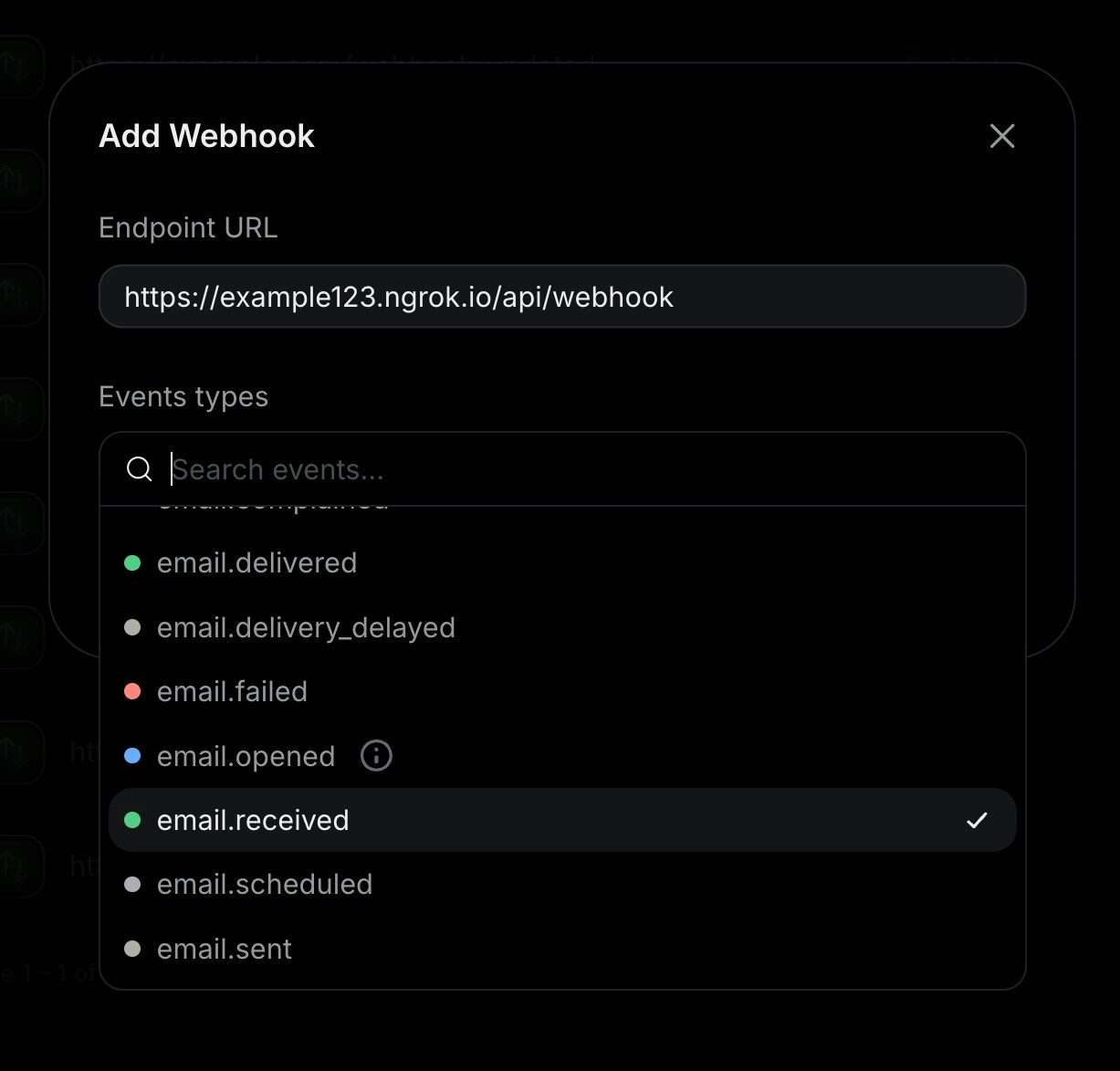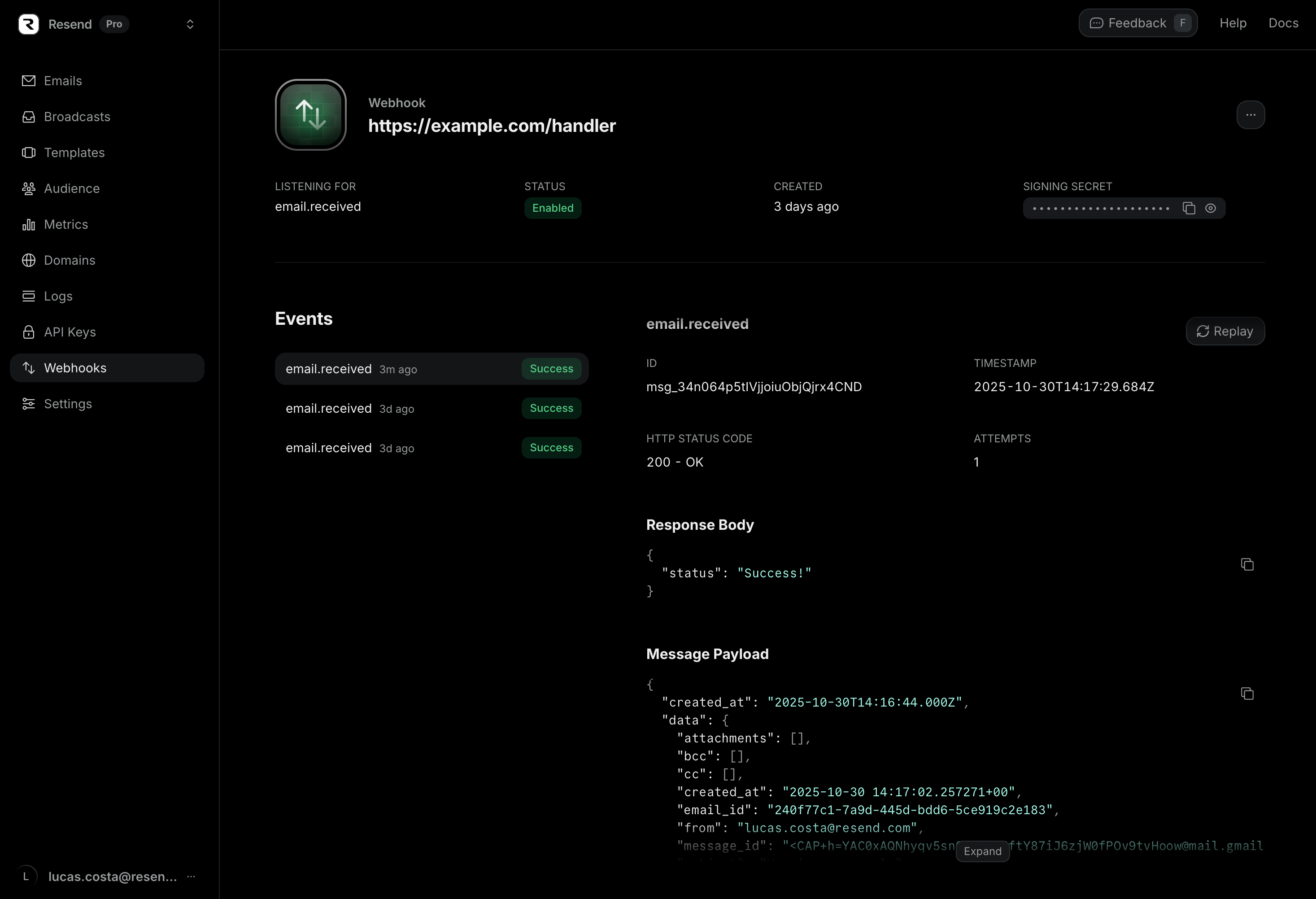What is a webhook?
Resend uses webhooks to push real-time notifications to you about your email sending. All webhooks use HTTPS and deliver a JSON payload that can be used by your application. You can use webhook feeds to do things like:- Automatically remove bounced email addresses from mailing lists
- Create alerts in your messaging or incident tools based on event types
- Store all send events in your own database for custom reporting/retention
Steps to receive webhooks
You can start receiving real-time events in your app using the steps:- Create a local endpoint to receive requests
- Register your development webhook endpoint
- Test that your webhook endpoint is working properly
- Deploy your webhook endpoint to production
- Register your production webhook endpoint
1. Create a local endpoint to receive requests
In your local application, create a new route that can accept POST requests. For example, you can add an API route on Next.js:app/api/webhooks/route.ts
HTTP 200 OK to signal to Resend that the event was successfully delivered.
2. Register your development webhook endpoint
Register your publicly accessible HTTPS URL in the Resend dashboard.
3. Test that your webhook endpoint is working properly
Send a few test emails to check that your webhook endpoint is receiving the events.
4. Deploy your webhook endpoint
After you’re done testing, deploy your webhook endpoint to production.5. Register your production webhook endpoint
Once your webhook endpoint is deployed to production, you can register it in the Resend dashboard.FAQ
What is the retry schedule?
What is the retry schedule?
If Resend does not receive a 200 response from a webhook server, we will retry the webhooks.Each message is attempted based on the following schedule, where each period is started following the failure of the preceding attempt:
- 5 seconds
- 5 minutes
- 30 minutes
- 2 hours
- 5 hours
- 10 hours
What IPs do webhooks POST from?
What IPs do webhooks POST from?
If your server requires an allowlist, our webhooks come from the following IP addresses:
44.228.126.21750.112.21.21752.24.126.16454.148.139.2082600:1f24:64:8000::/52
Can I retry webhook events manually?
Can I retry webhook events manually?
Yes. You can retry webhook events manually from the dashboard.To retry a webhook event, click to see your webhook details
and then click the link to the event you want to retry.On that page, you will see both the payload for the event
and a button to replay the webhook event and get it sent to
the configured webhook endpoint.
Try it yourself
Webhook Code Example
See an example of how to receive webhooks events for Resend emails.